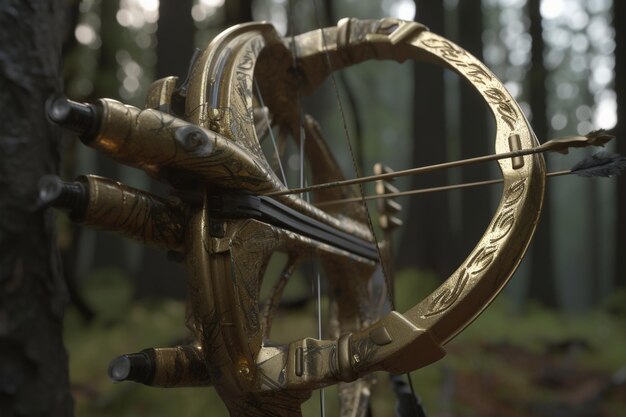Unraveling the Myth: Is the Legend of Robin Hood Based in Reality?
The tale of Robin Hood is one of the most enduring legends in English folklore, capturing the imagination of people worldwide with stories of daring adventures, heroic altruism, and the timeless fight against injustice. But this raises a tantalizing question: Was Robin Hood real? In this exploration, we will delve into the nuances of this legendary figure, understanding the historical context and examining the evidence—or lack thereof—behind his existence.
The Legend and Its Origins
The legend of Robin Hood has been passed down through generations, becoming a symbol of the fight against oppression and poverty. He is often depicted as a skilled archer and swordsman, living with his band of Merry Men in Sherwood Forest, stealing from the rich to give to the poor.
Evolution of the Robin Hood Narrative
The earliest references to Robin Hood date back to medieval ballads of the 14th and 15th centuries. These stories painted him as an outlaw living in the forest, with a strong moral compass, focused on justice and the redistribution of wealth.
- Early Ballads: These often mention Robin's allegiance with other outlaws and depict skirmishes with the Sheriff of Nottingham.
- Literary Expansions: Later adaptations, especially during the Victorian era, added layers of romance and nobility, marrying Maid Marian and ennobling his fight against corrupt power.
Historical Context
Understanding the historical backdrop of Robin Hood’s story is crucial. Medieval England was rife with issues such as oppressive taxation, class strife, and feudal conflict—conditions ripe for spawning a hero who championed the common people.
- Peasants' Revolt: Occurring in 1381, this historical event reflects societal discontent, aligning with Robin Hood’s moral narrative.
- Feudal System: The rigid feudal hierarchy set the stage for folklore appealing to the powerless, longing for justice and equality.
Was There a Real Robin Hood?
Many historians and researchers have tried to unearth concrete evidence of Robin Hood's existence, sifting through historical records, folklore, and literature.
Historical Candidates
Multiple historical figures have been proposed as potential inspirations for Robin Hood:
- Robert Hod (1290–1347): Also known as "Robyn hode," this Yorkshire outlaw appears in court records, notorious for illegal protection activities.
- Roger Godberd (fl. 1260s): Known for taking refuge in Sherwood Forest, and his exploits resemble those of Robin Hood's.
- William Wallace (1270–1305): Some speculate that stories of the Scottish freedom fighter influenced the legend.
Sherwood and Barnsdale: Fact or Fiction?
- Sherwood Forest: Located in Nottinghamshire, it serves as the legendary home of Robin Hood. Historical records confirm its existence and use as a royal hunting ground.
- Barnsdale: Often cited in ballads as Robin's home territory situated in South Yorkshire, further complicating attempts to pin down a precise historical location.
The Role of Fiction and Folklore
The Robin Hood story has evolved significantly over centuries, intertwined with cultural and political changes:
Expanding the Myth
- Literary Adaptations: Writers like Sir Walter Scott in "Ivanhoe" expanded the romantic vision of Robin Hood, rooting him in more noble causes.
- Children’s Literature: The 19th and 20th centuries saw Robin Hood becoming a staple in children's books, further entrenching his status as a heroic figure.
Cultural Influence
Robin Hood plays a significant role in shaping cultural identity, often invoked during discussions on justice and societal reform:
- Symbol of Justice: A timeless emblem of the fight against tyranny and corruption.
- Popular Culture: From Errol Flynn's iconic portrayal in the 1938 film to the modern adaptations, each iteration continues to weave old with new elements.
A Summary of Key Takeaways
📚 Robin Hood: Fact or Lore?
- Historical Ambiguity: There is no definitive evidence of a single ‘real’ Robin Hood, though various historical figures share similarities.
- Symbolic Resonance: Embodies resistance against injustice, resonating with people across different eras.
🏹 Exploring the Legacy
- Cultural Icon: A continuous presence in media, shaping perceptions of heroism.
- Literary Significance: The legend’s adaptation through centuries showcases universal themes of bravery and moral righteousness.
Engaging with the Legend Today
Modern-Day Relevance
The story of Robin Hood transcends generations, making it a relevant narrative even in contemporary society, often inspiring social campaigns and political rhetoric. Robin Hood's values —equity, justice, and bravery—continue to inspire activism and cultural dialogue.
Retrospective Reflection
The question, "Was Robin Hood Real?" while unanswered, opens the door to exploring the intersection between myth and reality. Regardless of his existence, the Robin Hood narrative serves an essential function in cultural storytelling, offering hope and moral guidance amid social upheaval.
Navigating the Legend in Popular Media
Films and TV Shows: Keeping the Legend Alive
From classic films to modern television adaptations, Robin Hood remains an enduring figure in popular culture. These works not only entertain but also explore relevant social issues through the legend’s lens.
Educational Impact
Educational Material: The story is often included in school curriculums, teaching historical context, literature, and the evolution of folklore.
The quest to confirm Robin Hood's existence may remain elusive, but the underlying principles of his legend continue to inspire and resonate with audiences today. Whether fact or fiction, Robin Hood's legacy endures, challenging us to uphold truth, justice, and compassion in our lives.

Related Topics
- Can I Buy Gold On Robinhood
- Can I Day Trade Crypto On Robinhood
- Can I Day Trade On Robinhood
- Can I Have 2 Robinhood Accounts
- Can I Talk To a Live People On Robinhood
- Can I Talk To People On Robinhood App
- Can I Talk To Someone At Robinhood Support
- Can I Talk To Someone On Robinhood Without
- Can I Transfer Stocks From Robinhood To Fidelity
- Can You Buy Bitcoin On Robinhood